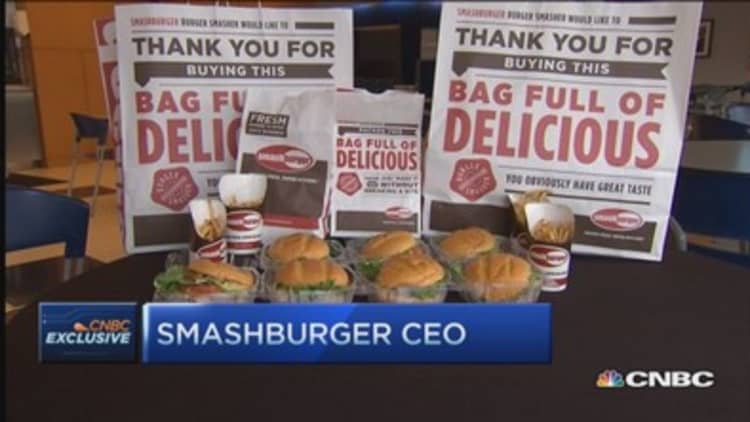
Smashburger still has plenty of room to expand, and could eventually go public, its CEO, Scott Crane, told CNBC on Tuesday.
"At some point in time that is an option," he said when asked about any plans for an IPO, noting that Smashburger has a very solid capital structure and an "unbelievable partner in our senior debt."
However, "right now we're running the company to grow the company."
Crane said on "Closing Bell" that Smashburger plans to grow 20 to 25 percent this year, and is anticipating about the same expansion rate over the next three to four years.
Read MoreThe food trade: 5 appetizing plays
The burger joint, which will be 8 years old in June, operates 312 stores in 36 states and nine countries. It is opening up a new location in New York on Wednesday, just blocks from the New York Stock Exchange. It's also eyeing expansion into the United Kingdom.
Crane said Smashburger is successful, while fast food names like McDonald's are struggling, because "it's a new way to eat burgers." It smashes them to lock in juices and fats, becoming what he calls "meat candy." He also touted the company's food delivery system and fresh ingredients.
The fast-casual space in general also still has room to grow, Crane said. While there are about 40,000 to 50,000 fast food burger restaurants, there are only about 2,000-2,500 fast-casual burger eateries, he noted.
"I think that consumers are voting with their dollar to eat out in general. The fast-casual segment is growing mid to single teens," he said.
Read MoreThese restaurant stocks could be tasty: Analyst
Meanwhile, Smashburger, which has 7,000 employees, pays about 20 to 25 percent above minimum wage.
"We want the best service and the best employees in the business and therefore keeping the turnover down, sales growing and a development plan to be able to grow 60-80 restaurants a year out of our baseline restaurants," he said.


